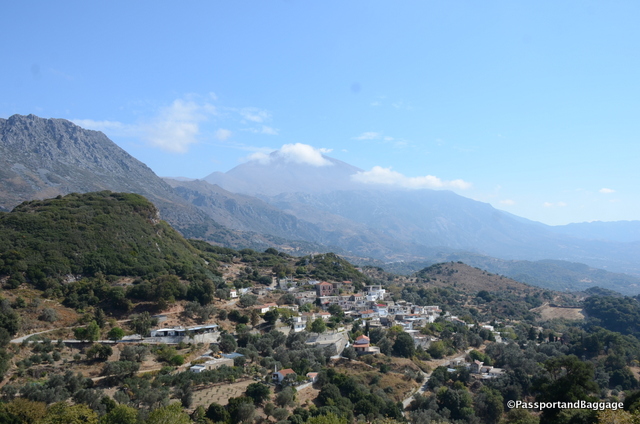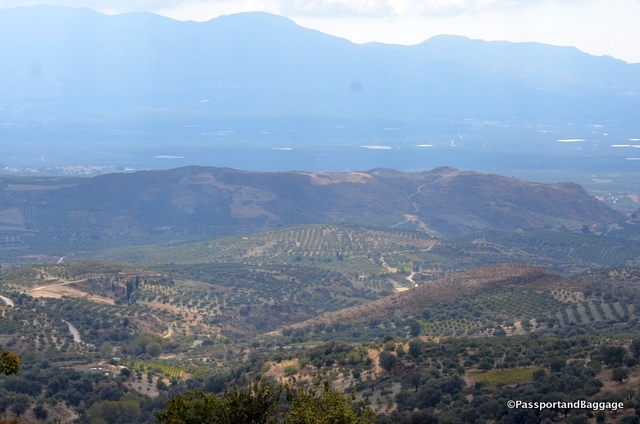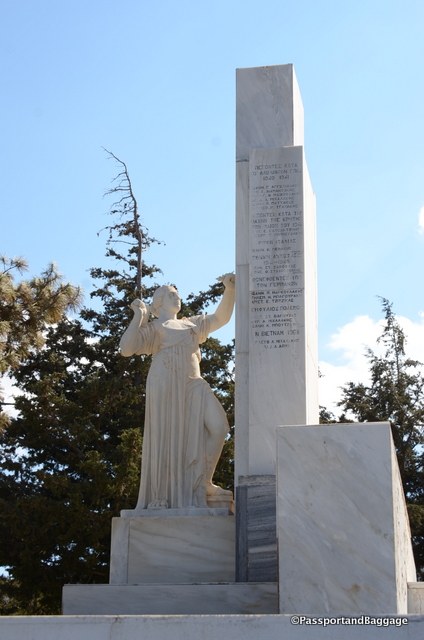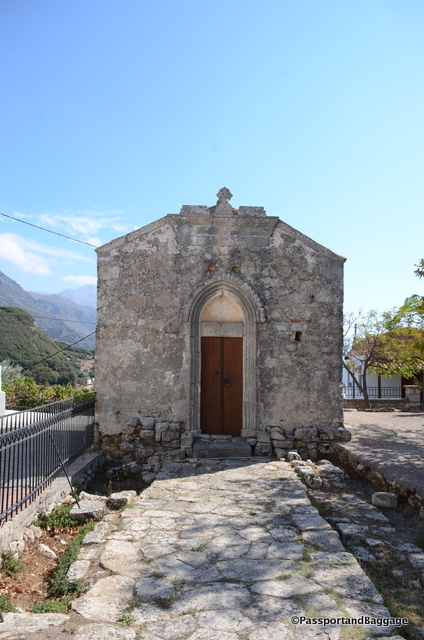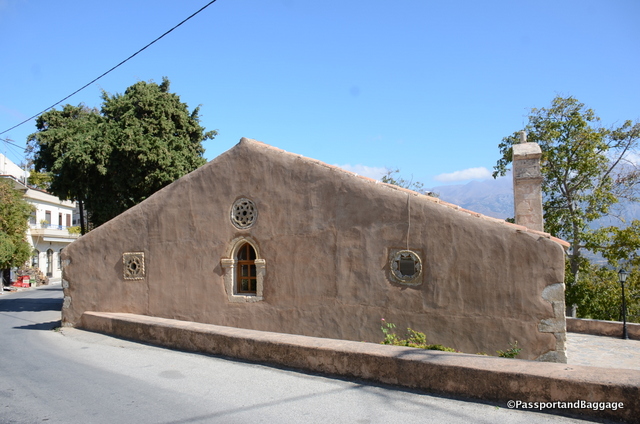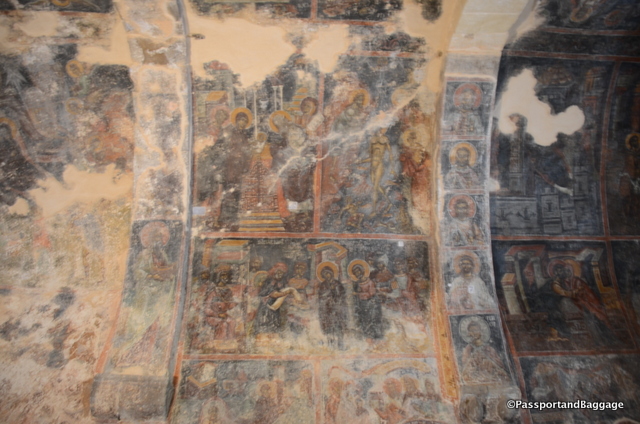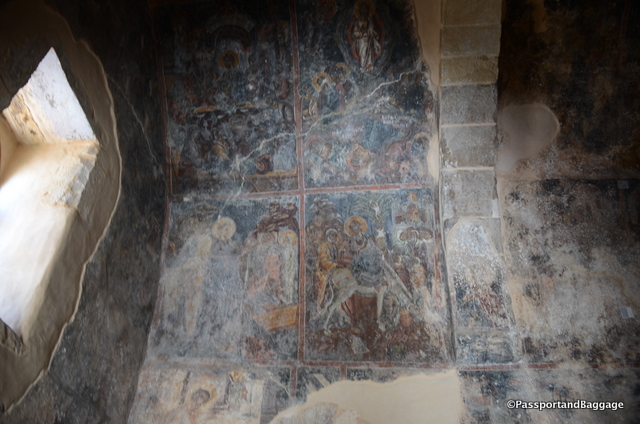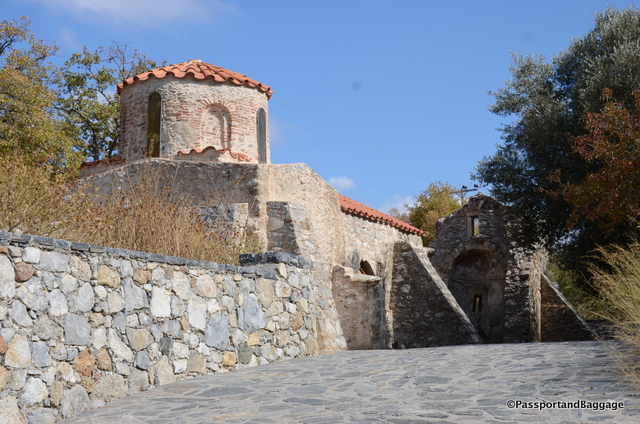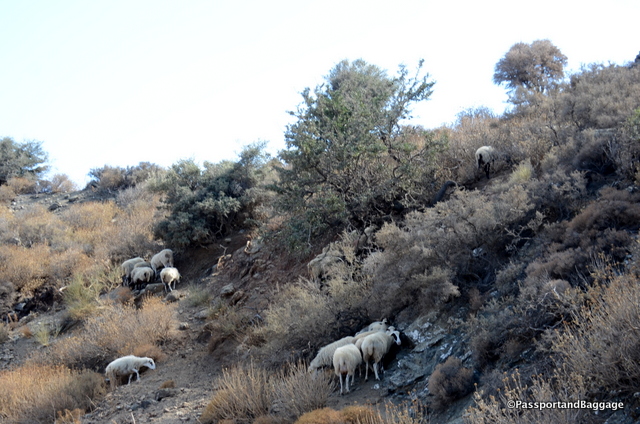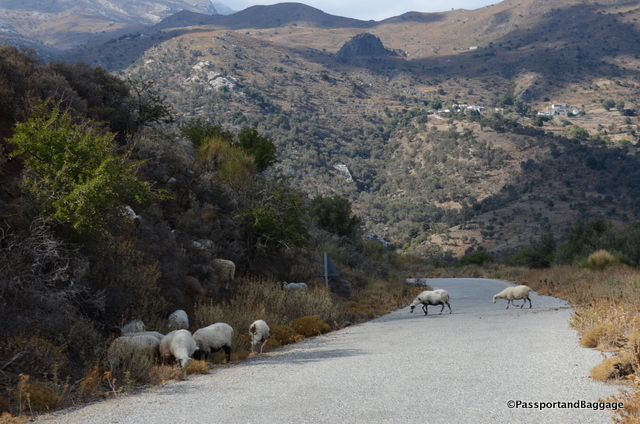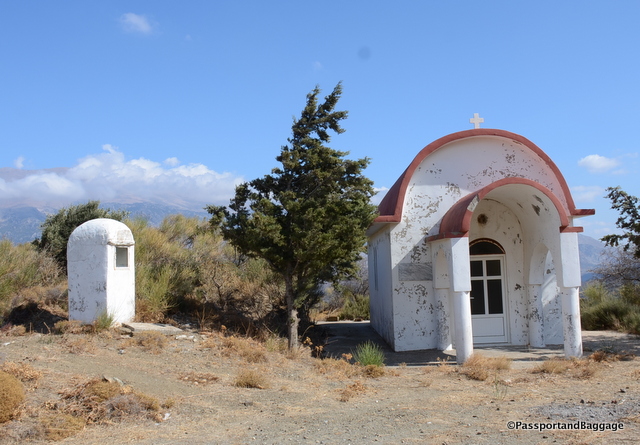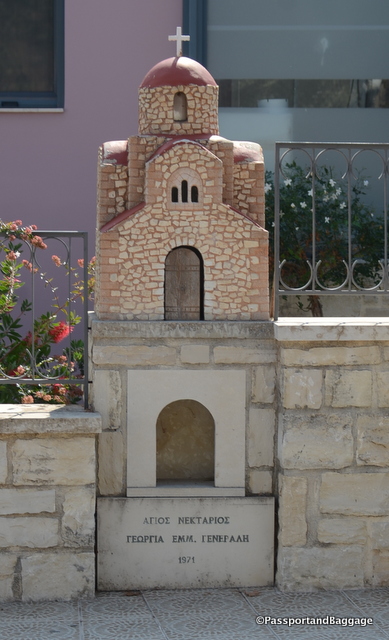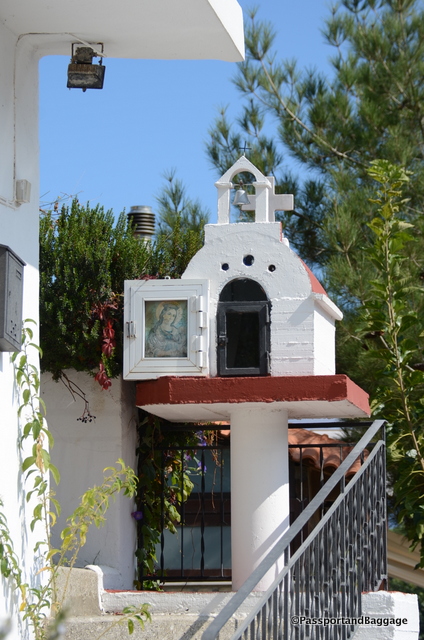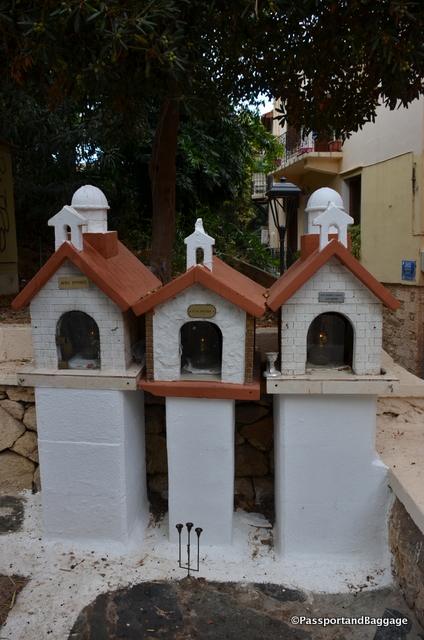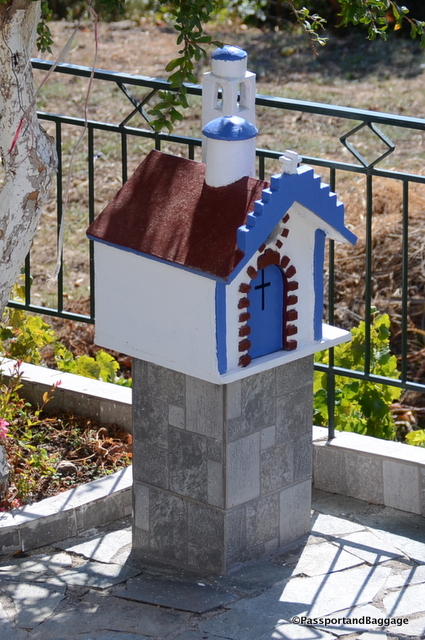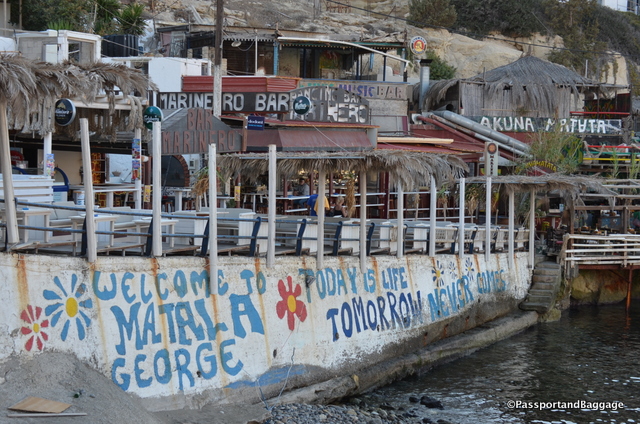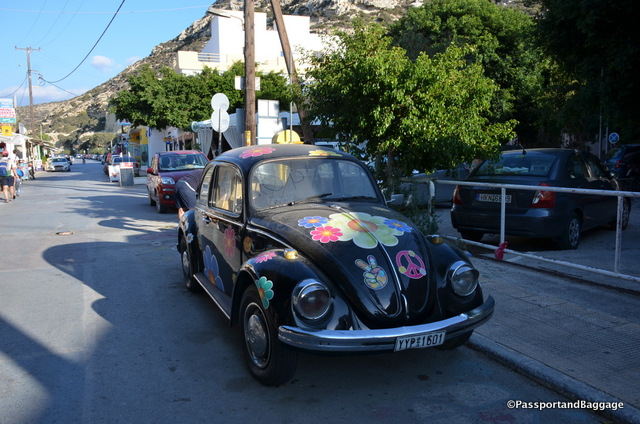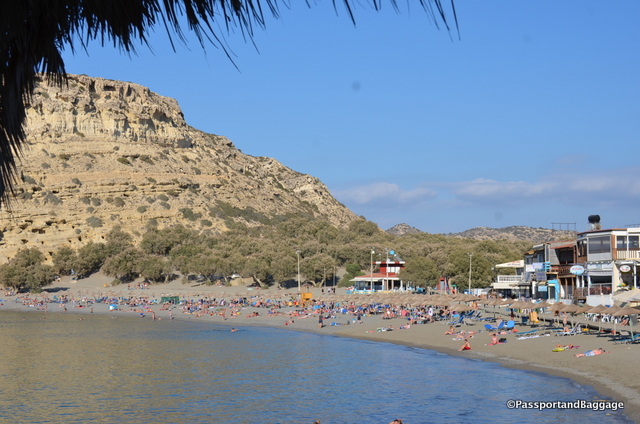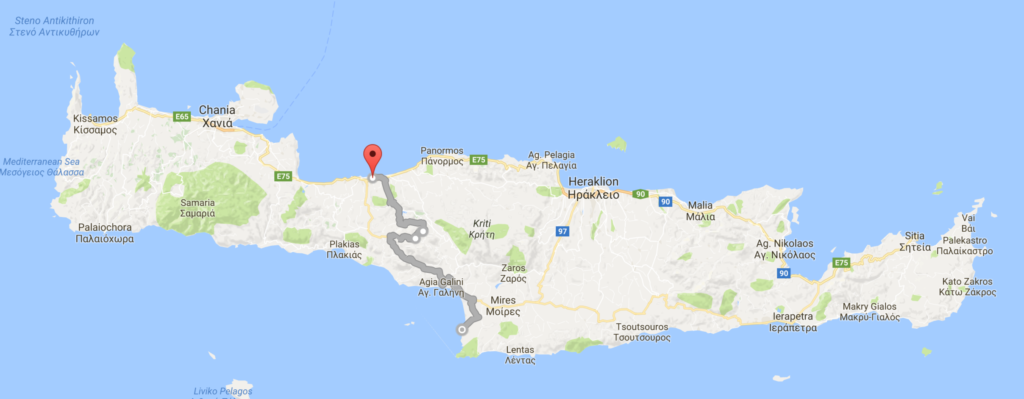October 20, 2016
The Amári Valley is not for those with an agenda. The drive is through some lovely and barren terrain, interrupted rarely by small towns that appear to be completely uninhabited. The joy is in the hidden surprises.
The valley is towered over by Mount Idi, an often-used crossword puzzle word for you fans, and the highest mountain of Crete at 8,047 feet.
On August 22, 1944, the German forces of occupation began burning the villages of this area, and killing people as an act of reprisal for the abduction of the island’s garrison commander, General Kreipe.
“The burning went on for an entire week,” wrote George Psychoundakis, author of The Cretan Runner. “First, they emptied every single house, transporting all the loot to Rethymnon; then they set fire to them; and finally, to complete the ruin, they piled dynamite into every remaining corner and blew them sky-high. They shot all the men they could find.”
Each village you travel through contains a war memorial along the road that tells the tale of the shootings and lists their name. This includes 43 men from Gerakari,19 from Kardaki, and 38 in Ano Meros.
This last memorial, which I went specifically to seek out, is of a Cretan woman raising her hammer to chisel the names of the dead.
Every Amári village has at least one church, many decorated with stunning 14th- and 15th-century frescoes, we stopped at just two of the more accessible. The first was in a small town outside of Thrónos in the very small town of Syvritos, the Church of the Panagia. You must contact the older lady at the café to get in. There were no photos allowed, and she did not leave her post, making sure you didn’t try to take one, she did, however, appreciate any change you gave her towards the care of the church.
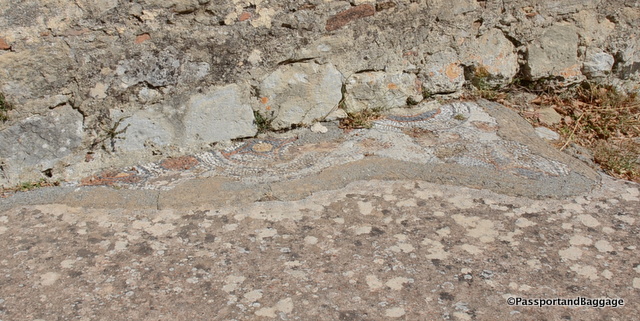
The church was built over the site of a much larger church, the mosaic floor is discernible in a few places outside
Panagia, also transliterated Panayia or Panaghia, is one of the titles of Mary, the mother of Jesus, used especially in Orthodox Christianity.
Most Greek churches dedicated to the Virgin Mary are called Panagia; the standard western Christian designation of “St. Mary” is rarely used in the Orthodox East, as Mary is considered the holiest of all human beings and therefore of higher status than the Saints.
In the town of Méronos is another church with 14th century frescoes, also called the Church of Panagia. This one I was able to take a few photos inside.
We also stopped in the town of Gerakári, ostensibly for a glass of their famous Cherry brandy, but there was none to be had. The town is famous for its cherries, but what really strikes you when you arrive is the immense complex, called Gerakári Homes, which is an old folks home, I am not sure how successful, as we truly saw no one in the entire town.
A little farther along, just outside the town of Kardáki is an old church called the Church of Agios Ionnis. This little church became famous when it was used for scenes in the movie Mama Mia, sadly it was closed, but the setting is just gorgeous.
All of the drive from the town of Ano Méros to the coast is through barren landscape only dotted here and there with olive groves, the road is very poor and goats are your only companions.
Everywhere you go are churches. The big churches are inside the towns but the small ones are practically everywhere. Usually painted white. You will find them on a beach, on the mountain peaks, in deep gorges or inside caves. People of Crete are deeply religious people and they build churches to express their gratitude to God or to fulfil a “tama”, a promise given to God in exchange for a request. This was not the prettiest one by far, it just caught my eye and I had to pull over to take a picture.
You will also find these little shrines everywhere, they are kandylakia. You will often see them on the roadsides, but they don’t always mean a death as most people presume, they are also put up when someone’s life is spared.
Styles and materials differ depending on the choice of the family commissioning the shrine. Custom dictates that at least one icon and a votive candle be placed inside the box, but I also saw bottles of holy oil, and sometimes names and dates inscribed on them.
We ended in the town of Mátala. Mátala is one of those nightmare places that caters to nothing but tourists. The hotels are for the budget conscious and the food is for people that prefer cheap fried, rather than quality. There are more T-shirt vendors in one square block than can be imagined. The beach however, is rather stunning, the real reason that holiday revelers come.
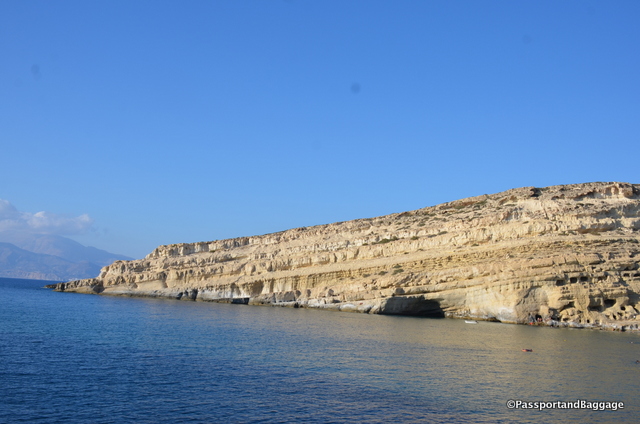
The caves looming over the beach were originally tombs in the Roman Era. Later they were used by early Christians, shepherds and recently, hippies.
Homer described Menelaos, husband of Helen of Troy, being shipwrecked here on his way home from Troy. During the Hellenistic times, around 220 BC Malata served as the port for the ancient city-state of Gortys.
